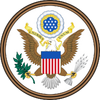| ||||
| Capital | Panama City | |||
| Other Cities | David, San Miguelito, Tocumen | |||
| Language | English and Spanish | |||
| Demonym | Panamanian | |||
| Established | January 22, 1903 | |||
| Admission | January 3, 1959 | |||
| Abbreviations | US-PN | |||
The State of Panama (Spanish: Estado de Panamá), colloquially known as Panama, is one of the 45 states which makes up the United States of America. Located in Central America situated between North and South America, the state is bordered by the Mexican state of Costa Rica to the west, Colombia to the southeast, the Caribbean to the north and the Pacific Ocean to the south.
From 1717 until 1819, Panama was under the control of Spain under the administration of the Viceroyalty of New Granada. Following Napoleon's conquest of Spain in 1808, Spain's New World colonies saw a chance to achieve complete independence from their European rulers (akin to the United States' independence from Great Britain). Under the leadership of Simón Bolívar New Granada would gain independence and form the Republic of Gran Colombia in 1821. Debates over a centralized or decentralized government resulted in the dissolution of the union and the establishment of the modern nations of Colombia, Ecuador, and Venezuela.
Panama would come under the control of Columbia following the collapse of Gran Colombia. Conflict between liberals and conservatives would spark another conflict known as the Thousand Days' War. During the war, the United States under President Theodore Roosevelt would intervene on behalf of the separatist Department of Panama and with the signing of the Hay–Herrán Treaty in 1903, Panama was officially recognized as an American Territory.
As part of the Hay–Herrán Treaty, the United States government was allowed a renewable lease of 100 years on a six-mile-wide strip across the territory. This would eventually become the Panama Canal. During World War II, Panama would become of strategic importance as a means of transferring supplies to Japan in fighting China and the Soviet Union in fighting Germany. When the United States officially entered the war in 1941, the isthmus became even more important to the Allied war effort.
Panama would continue to be an organized incorporated territory of the United States until 1958 when the Panama Statehood Act was enacted on July 7, 1958 and signed by President Dwight D. Eisenhower the same day. This made Panama the 43rd state in the Union on January 3, 1959.
| |||||||||||||||||


